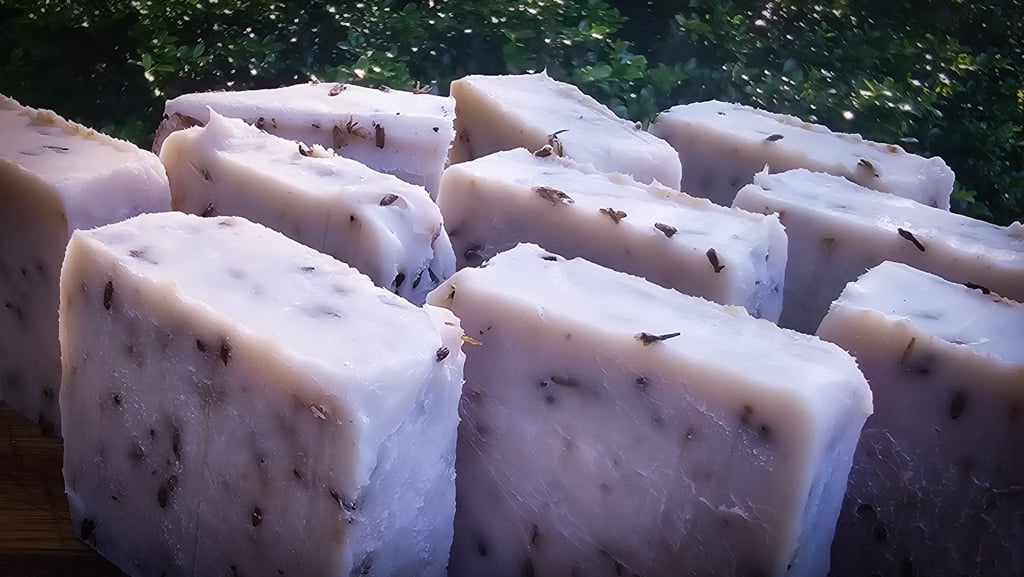Summer is one of my favorite times of the year. As the days grow longer and the air fills with the fragrant scent of blooming flowers, I find myself especially drawn to the soothing aroma of lavender. Lavender, with its delicate purple blossoms and calming properties, is one of my favorite summer plants. It’s incredibly versatile, perfect for crafting everything from culinary delights to natural remedies and, of course, homemade lavender soap for luxurious skincare.
As a soap maker, I love using lavender to create beautiful handmade cold process soap bars. There’s something magical about transforming this fragrant herb into luxurious soap. Making lavender soap combines science, creativity, and a deep appreciation for nature’s bounty.
In this guide, I’ll show you how to make your own lavender soap from start to finish. We’ll go over harvesting lavender flowers and infusing their skin-loving properties into your soap. I’ll share my personal lavender soap recipe that captures the essence of summer with its calming, floral scent.

Harvesting and Infusing Lavender into Your Soap
Lavender’s enchanting fragrance and skin-loving properties make it a perfect addition to homemade soap. Here’s how to harvest and infuse lavender for your soap:
Harvesting Lavender:
- Timing: Harvest in the morning after the dew has dried but before it gets too hot.
- Bloom Stage: Cut lavender when about half of the flower buds are open to capture the highest concentration of essential oils.
- Cutting: Use sharp scissors or garden shears to cut the stems just above the leaves.
- Drying: Bundle the stems and hang them upside down in a cool, dark, dry place with good air circulation for about two weeks.
Infusing Lavender into Oils:
- Prepare the Lavender: Once dried, crumble the flowers into smaller pieces.
- Choose Your Oil: Olive oil is a great choice for its moisturizing properties. Fill a jar halfway with dried lavender flowers.
- Infusion Process:
- Cold Infusion: Pour oil over the lavender, seal the jar, and place it in a sunny spot for 4-6 weeks, shaking gently every day.
- Heat Infusion: Place the jar in a slow cooker with water (below the top of the jar) on low for 8-24 hours.
- Straining: Strain the oil through a fine mesh sieve or cheesecloth to remove the lavender pieces.
Benefits of Lavender-Infused Oil:
- Soothing: Lavender calms and soothes irritated skin.
- Antibacterial: Helps cleanse the skin with natural antibacterial properties.
- Aromatherapy: Provides a calming, relaxing scent.
By harvesting and infusing lavender, you enhance your soap’s therapeutic properties and create a luxurious, personal touch in every bar.
Where to Purchase Lavender
If you don’t have access to local or homegrown herbs, I highly recommend purchasing them from Mountain Rose Herbs. They are my favorite place to buy high-quality, organic dried herbs and herbal products. As a company they believe in people, plants, and planet over profit and only ever source their herbs ethically and sustainably. It is through this ethical, responsible sourcing, that they are able to offer one of the largest selections of certified organic herbs, spices, and botanicals in North America.
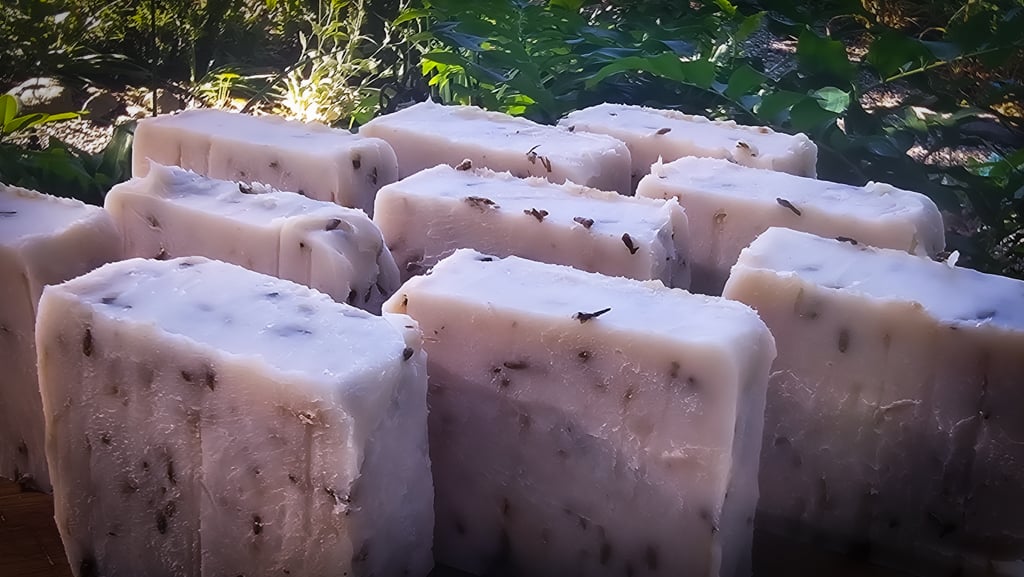
STEP-BY-STEP GUIDE TO MAKING Lavender SOAP
Making your own cold-process lavender soap bars is not just a fun project; it’s a ritual that connects you to the ingredients and the process. Here, I’ll guide you through each step to create your own lavender soap, infused with the soothing scent of lavender essential oil and the skin-loving benefits of purple kaolin clay.
EQUIPMENT
- Safety Goggles
- Rubber Gloves
- Kitchen scale
- Glass Measuring Cups
- Thermometer
- Stainless steel pot for melting oils
- Immersion Blender
- Silicone Spatula
- Soap Mold – This one is the perfect size to fit this recipe.
- Freezer Paper for lining molds if not using silicone
INGREDIENTS
- 9 oz coconut oil
- 9 oz olive oil infused with lavender (herb infused) Here’s how to infuse herbs in oils
- 4 oz shea butter
- 3 oz castor oil
- 3 oz sweet almond oil
LIQUIDS AND LYE
- 3.9 oz lye
- 9 oz cold water
ADDITIONS AT TRACE
- 1/4 cup dried lavender buds
- 1.23 oz (35 g) lavender essential oil
- 2 tsp.
- Brazilian Purple Clay
Why Brazilian Purple Clay? Brazilian Purple clay is known for its gentle, soothing properties. It’s perfect for sensitive skin, helping to cleanse and exfoliate without stripping the skin of its natural oils. The clay also helps to detoxify the skin, absorb excess oil, and improve the overall texture, leaving your skin feeling soft and smooth
When considering the purchase of Brazilian Purple Clay, exercise caution, especially when buying from online marketplaces like Amazon and Etsy. Many products are falsely labeled and often consist of white kaolin clay mixed with mica to achieve a purple hue. This adulteration can result in the clay either not retaining its purple color in soap or transforming into an unexpected and undesirable shade. Always read the negative reviews before making a purchase to avoid disappointment.
A note on essential oils -When it comes to adding essential oils to your soap recipe, the amount you use can vary based on personal preference and the strength of the essential oil’s scent. However, a general guideline for soap making is to use about 0.5 to 1 ounce of essential oil per pound of soap.
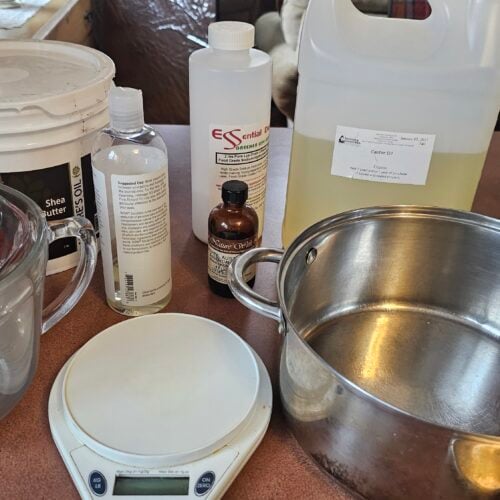



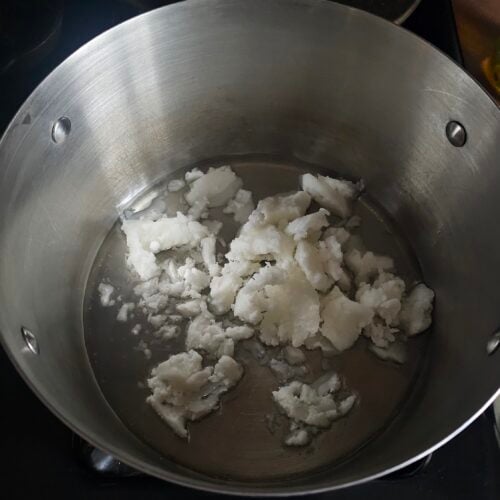

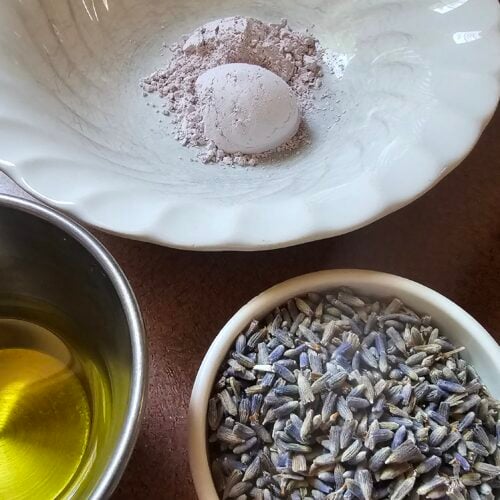

Method:
Safety First: The first thing I do when making a batch of cold process soap is to assemble all needed equipment and ingredients. Then I put on gloves, goggles, and long sleeves for protection.
Measure the Water: Measure the cold water and pour it into a heatproof pitcher. Use a kitchen scale for precision. Accurate measurement is essential for successful soap making.
Lye Solution: Next, weigh the lye using a kitchen scale, then carefully add the lye to the water and mix until dissolved. I like to do this part outdoors, as this will initially make fumes. Be sure to wear your goggles and gloves. Lye is caustic and will burn if it comes in contact with skin. Allow the lye solution to cool for 30 to 40 minutes until it reaches a temperature of about 100 to 110°F (38 to 43°C). To speed this up, you can place the pitcher in a sink filled with ice water.
Oil Mixture: Weigh all the oils accurately. Melt the coconut oil and shea butter in a stainless steel pot on the stove, then add in the other oils, but not the essential oils – that will come later. Warm the oil mixture to approximately 100 to 110°F (32 to 38°C).
Blending: Once both the lye solution and oils are at the right temperature (both mixtures around 110°F), slowly pour the lye solution into the oils. Mix them by alternating between hand stirring and using a stick (or immersion) blender until the mixture reaches ‘trace’ – when the mixture is thick enough to leave a mark on the surface. For a batch this small, you can opt to hand mix using a whisk, although it will take a bit longer than using an immersion blender.
Adding Extras: After the mixture has reached trace (like thick pudding), it’s time to stir in your dried lavender buds, lavender essential oil, and purple clay. If you’re sensitive to essential oils or smells, you can certainly leave them out.
Pouring and Curing: You’re almost finished! Now, simply pour the mixture into your mold. At this point, I like to take the back of a spoon or small rubber spatula and make a few swirly designs on top of my mixture, but this is not necessary. Then cover (I use a piece of cardboard) and insulate the soap mold (with a blanket or towel) for 24 hours. After this, remove it from the mold and cut it into bars. The bars will need to cure for 4–6 weeks before use.
Remember, the key to great soap is precision and patience. Weigh your ingredients carefully, monitor your temperatures, and give your bars ample time to cure. The result is a wonderfully natural, nourishing lavender soap that’s kind to your skin and the environment.
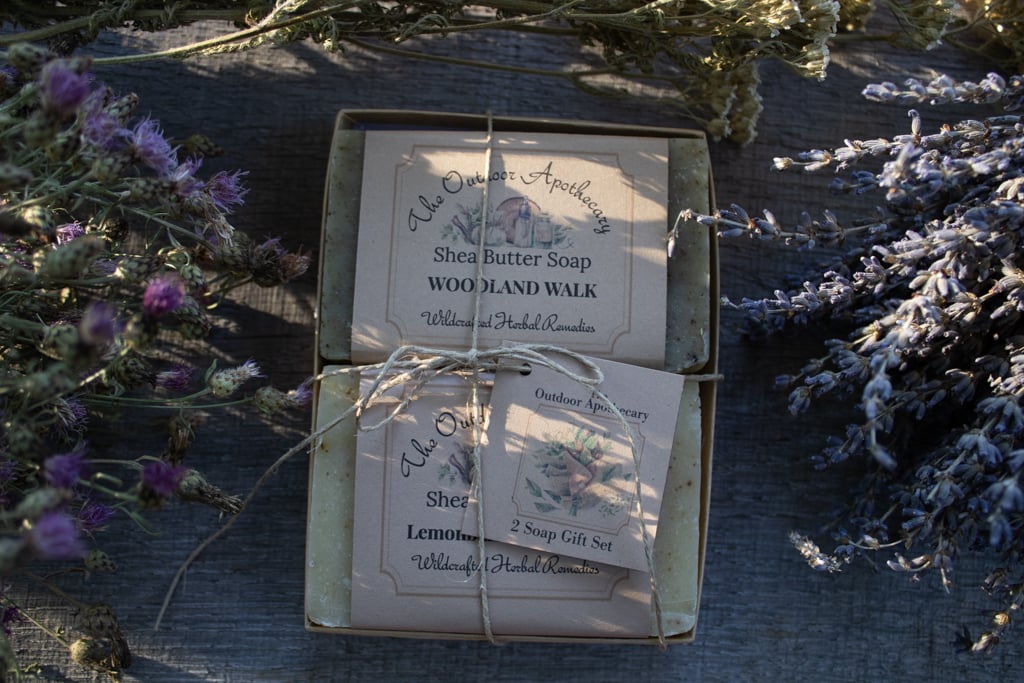
Explore More Homemade Cold Process Soap Recipes
Ready to dive deeper into the world of natural soap making? Discover our collection of homemade cold process soap recipes featuring foraged and homegrown ingredients, plants, and herbs. Each recipe offers a unique blend of nature’s finest gifts, transforming them into luxurious, skin-loving bars of soap.
As an Amazon Associate, I earn from qualifying purchases.

